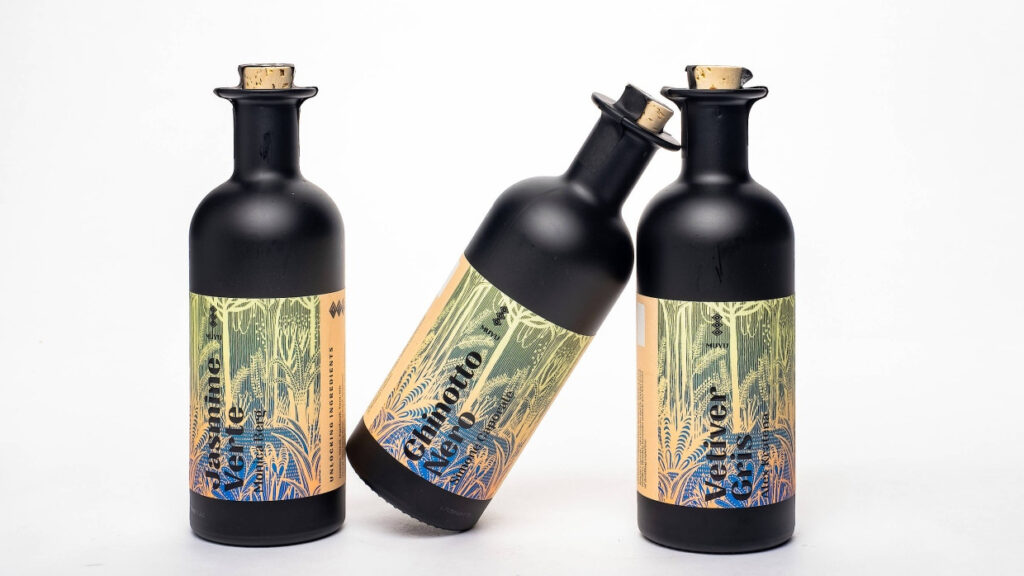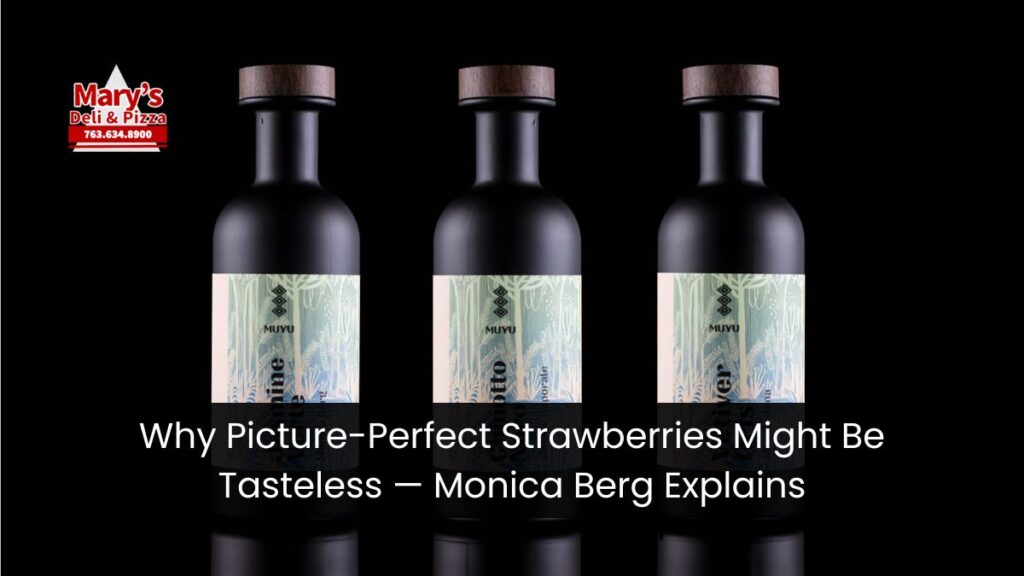When you grab a box of strawberries from the supermarket, their flawless appearance might make your mouth water. Yet, when you take a bite, you may be surprised to find that those strawberries, while visually perfect, often lack flavor.
Monica Berg, the award-winning bartender and co-founder of London’s renowned Tayēr + Elementary, has a lot to say about this phenomenon.
Her perspective on sustainability and flavor has gained traction, especially with her recent ventures, including Muyu Liqueurs, which she co-launched alongside Alex Kratena and Simone Caporale.
In a world that often values appearance over quality, Berg warns that many fruits and vegetables—especially mass-produced varieties—sacrifice taste for availability.
Let’s dive deeper into Berg’s views on the future of flavor, ingredient sourcing, and why sustainability matters when it comes to preserving authentic taste.
Flavors and Ingredients: Monica Berg’s Mission
Monica Berg has long been an advocate for focusing on flavor above all else. With her new project Muyu Liqueurs, she seeks to push the boundaries of traditional ingredient sourcing and flavor composition.
The three liqueurs—Jasmine Verte, Chinotto Nero, and Vetiver Gris—showcase unique combinations that stray from the ordinary, illustrating Berg’s desire to explore the full potential of flavor.

Berg’s passion for authentic flavor was sparked by a realization she and her co-founders had in 2016. She explained in an interview, “We just wanted to honor and celebrate biodiversity.”
According to Berg, modern society has largely become disconnected from nature’s authentic flavors, resulting in fruits and vegetables that are widely available year-round but are often tasteless.
The Problem with Modern Agriculture: Year-Round Availability
The widespread availability of fruits and vegetables, no matter the season, has led to a compromise in both nutrition and flavor.
While it may seem convenient to find strawberries in December or tomatoes in January, Berg explains that these out-of-season crops are often grown in greenhouses or shipped from far-flung locations, stripping them of their natural taste.
“When something is growing within its natural season, it will always have more nutrition and flavor,” Berg says.
However, modern agricultural practices have emphasized availability over quality. This explains why those perfectly shaped strawberries you see in stores often fall flat in terms of taste.
The Flavor Trade-Off: Nutrition for Appearance
In Berg’s view, the emphasis on producing flawless-looking fruits and vegetables comes at a high cost. Mass-produced crops are often bred for their appearance and shelf-life rather than their flavor or nutritional content.
These picture-perfect fruits and vegetables may look beautiful in the supermarket, but they often lack the flavor and nutrients of their seasonal, locally grown counterparts.
“You can go to the supermarket and find all these picture-perfect strawberries, but they’re not going to taste like anything,” Berg notes.
The reason? These fruits are often harvested before they ripen naturally, transported across long distances, and treated to maintain their appearance, leading to a loss of flavor.
Why Sustainability and Biodiversity Matter
For Berg, the conversation about flavor goes hand in hand with sustainability. She believes that consumers and industry professionals need to rethink how we source and use ingredients.
Instead of relying on mass-produced crops that are available year-round, she advocates for supporting local, seasonal produce. “If we want to have flavor in the future, we need to hold off a little bit and stop and see what is happening around us,” she urges.
The issue of biodiversity is particularly pressing. Berg points out that many fruits, vegetables, and plants have become extinct in recent years due to unsustainable agricultural practices.
A 2019 report published on Earth.org noted that 571 plant species have gone extinct in the past 250 years, a rate 500 times faster than the natural extinction rate. Berg stresses that the loss of biodiversity will ultimately impact the flavors available to future generations.
The Impact of Climate Change on Flavor
Berg’s concern over flavor also intersects with her thoughts on climate change. With rising global temperatures and shifting weather patterns, the ability to grow certain crops is becoming more challenging.
This is particularly true for fruits and vegetables that rely on specific growing conditions to develop their unique flavors.
Berg believes that the food and beverage industry has a responsibility to be more mindful of how ingredients are sourced. “We are at a crossroads right now,” she says, “and we need to make choices that will ensure we still have flavorful ingredients in the future.”
Hyper-Local Ingredients: A Glimpse Into the Future
As the world becomes more globalized, people are increasingly exposed to a wider variety of flavors from different cultures.
According to Berg, this exchange of flavors will continue to influence food and drink trends. She envisions a future where people lean more into hyper-local flavors—ingredients that are unique to specific regions and cultures.
For example, a curry dish in India may differ significantly from one in Malaysia or Indonesia, yet they all share a common flavor profile.
This is what Berg finds fascinating about flavor: its ability to connect people across cultures while remaining deeply rooted in local traditions.
Preserving Cultural Flavors
Berg also stresses the importance of preserving cultural flavors. She notes that many traditional ingredients are in danger of being lost due to the dominance of mass-produced, globalized crops.
By focusing on local, seasonal ingredients, chefs, bartenders, and home cooks can help preserve the unique flavors that are central to different cultures.
“When people see it, they go, ‘Oh, my God, I grew up with this flavor,’” Berg says. “And then you have people from 10 different countries say, ‘I grew up with this flavor, but it looked like this where I grew up.’”
Table: Key Insights from Monica Berg’s Perspective
| Key Topic | Monica Berg’s Insights |
|---|---|
| Mass-Produced Fruits | Often lack flavor and nutrition due to greenhouse farming and early harvesting. |
| Seasonal Produce | Provides better flavor and nutritional value as it grows in its natural environment. |
| Sustainability | Critical to preserving flavor and biodiversity for future generations. |
| Biodiversity | 571 plant species have gone extinct in the last 250 years, harming global flavor diversity. |
| Hyper-Local Flavors | Expected to gain popularity as people reconnect with the flavors of their cultures. |
Conclusion:
Monica Berg’s mission is clear: to bring flavor back into the spotlight while promoting sustainability and biodiversity.
The next time you bite into a perfectly shaped strawberry that tastes like nothing, remember Berg’s advice to choose local, seasonal produce. Not only will it taste better, but it will also support sustainable farming practices that preserve the planet for future generations.
By focusing on flavor, we can make more mindful choices about the food we consume—and help ensure that the rich diversity of flavors from around the world continues to thrive.
FAQs
1. Why do supermarket strawberries often taste bland?
Supermarket strawberries are typically grown out of season in greenhouses or transported long distances, compromising their flavor and nutrition.
2. What is the impact of modern farming on flavor?
Modern farming prioritizes appearance and availability, often sacrificing the flavor and nutrition of fruits and vegetables.
3. How does sustainability relate to flavor?
Sustainability ensures that ingredients are grown in their natural season, preserving both their nutritional content and flavor.
4. What are hyper-local flavors?
Hyper-local flavors refer to ingredients and flavor profiles that are unique to specific regions, often tied to local agricultural practices.
5. How can I support biodiversity in my food choices?
Choose seasonal, locally sourced produce and avoid heavily processed or mass-produced ingredients that contribute to the loss of biodiversity.






